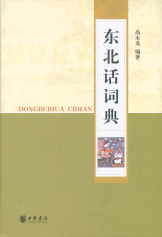
主要责任者: 高永龙
责任方式: 编著
出版者: 中华书局
出版地: 北京
字数: 1100 千字
页码: 1-797
开本: 32
中图分类号: H172.1-61
装帧: 精
语种:中
定价:76.00
出版时间:2013-11
丛书多卷书否:否
书目简介:本册工具书共收录13841条词条。
被引频次:54
| 词条 | 东北话词典 |
| 类别 | 中文百科知识 |
| 释义 |  主要责任者: 高永龙 责任方式: 编著 出版者: 中华书局 出版地: 北京 字数: 1100 千字 页码: 1-797 开本: 32 中图分类号: H172.1-61 装帧: 精 语种:中 定价:76.00 出版时间:2013-11 丛书多卷书否:否 书目简介:本册工具书共收录13841条词条。 被引频次:54 |
| 随便看 |
开放百科全书收录579518条英语、德语、日语等多语种百科知识,基本涵盖了大多数领域的百科知识,是一部内容自由、开放的电子版国际百科全书。